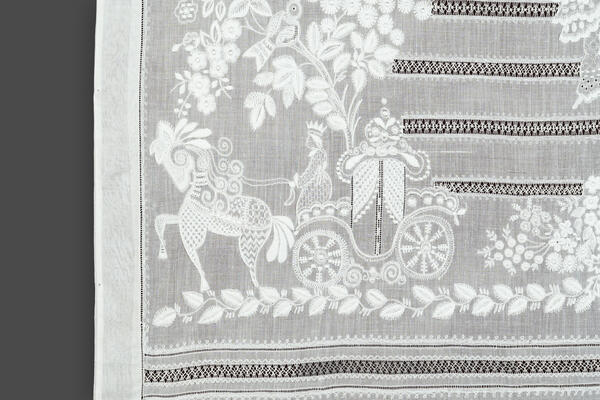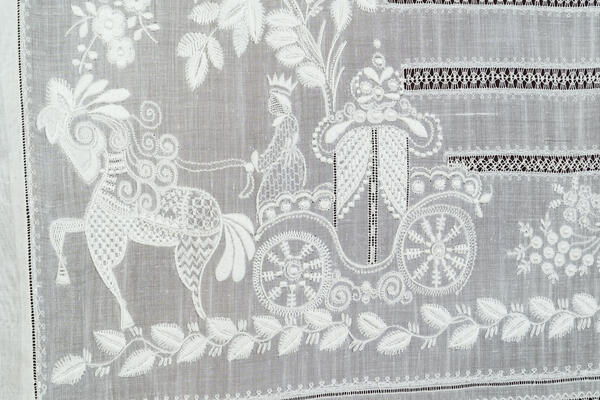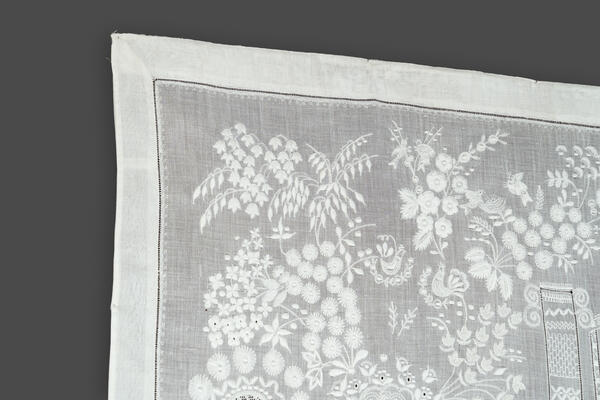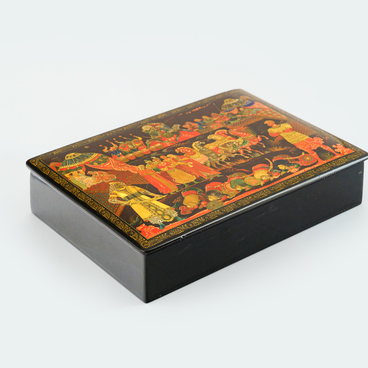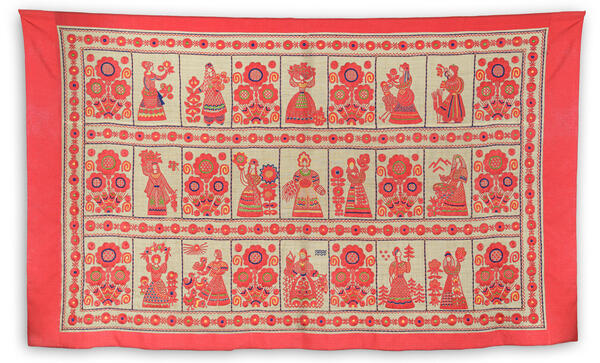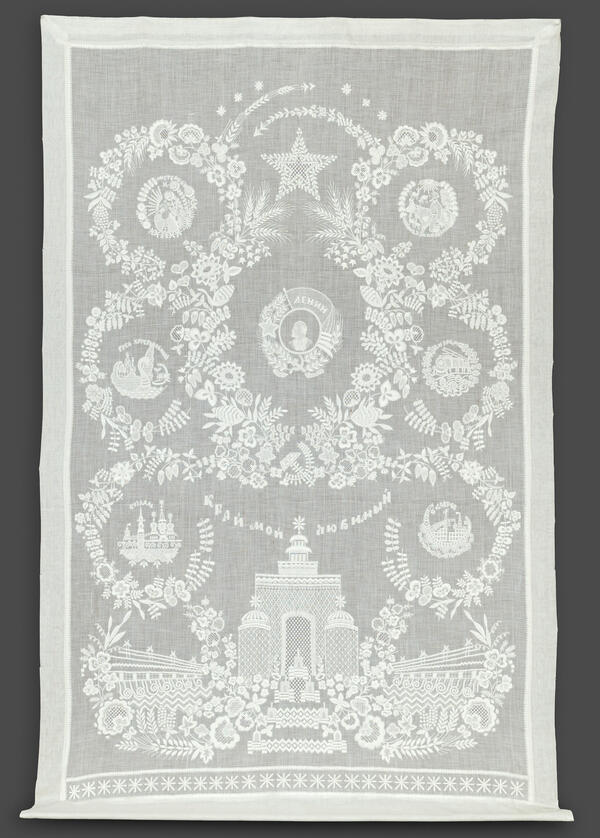Whitework is a type of fine elegant embroidery, in which the stitching is the same color as the foundation fabric. In Mstyora, this type of embroidery has been popular since the 19th century. Tablecloths, bed and table linen, and children’s clothes are decorated with whitework embroidery. First, the pattern is drawn on the fabric and traced along the contours with a simple joining stitch (in which the stitches are of the same length). Then the shapes are filled with rows of small stitches which are then covered with satin stitches in the opposite direction. Such padding gives additional volume to the image. Patterns of flowers and leaves forming garlands, wreaths, twigs and bouquets are typical for Mstyora embroidery. Craftswomen achieve openwork and especially light floral patterns.
The embroidery artist Tatyana Mefodievna Dmitriyeva-Shulpina (1913–1999) created over 500 original works. For a long time, she made drawings almost exclusively for whitework embroidery. The artist also developed drawings for machine-embroidered items at the Nadezhda Konstantinovna Krupskaya Sewing Factory.
Dmitriyeva-Shulpina enriches floral patterns, which are traditional for Mstyora embroidery, with new forms and boldly introduces a variety of motifs inspired by fairy tales, fables, and folk songs. It took the artist nine months to complete the drawing for the panel “Cinderella”. With this work, she invites the viewer to the poetic and magical world of the famous fairy tale. Dmitriyeva-Shulpina uses the techniques of whitework and satin stitch embroidery for the panel. It is made of white marquisette and embroidered with white embroidery thread in the techniques of whitework and satin stitch embroidery, with complex drawn threadwork — lacy lines are made by pulling the threads out of the background fabric. The panel is distinguished by its emotional mood and dynamism: the artist chose the moment when Cinderella runs headlong from the ball at midnight and loses her glass slipper.
In the upper right corner, there is an openwork
palace with a clock above the main entrance and a traditional cockerel on the
steeple. From the palace diagonally down to the left corner runs a staircase.
Drawn threadwork is successfully used for the depiction of the staircase. There
is a crystal slipper on the top step. In the center of the composition,
Cinderella in a ball gown quickly runs down the stairs. A carriage with a
coachman already awaits her. The artist decorates the lower border with a wide
ornamental stripe with large and small flowers and leaves.

